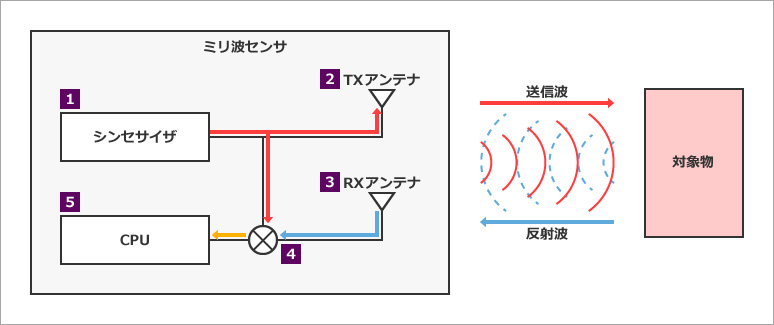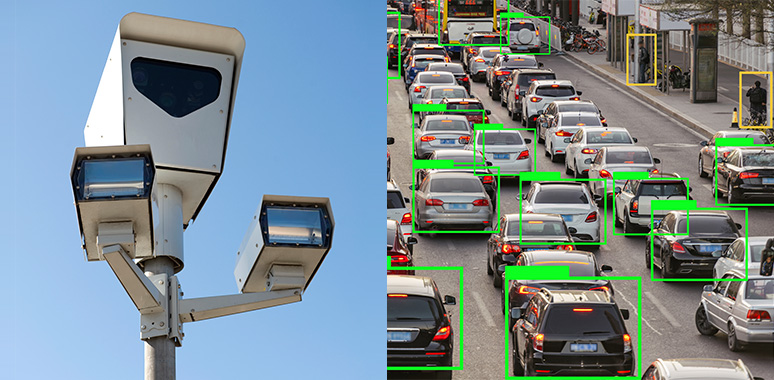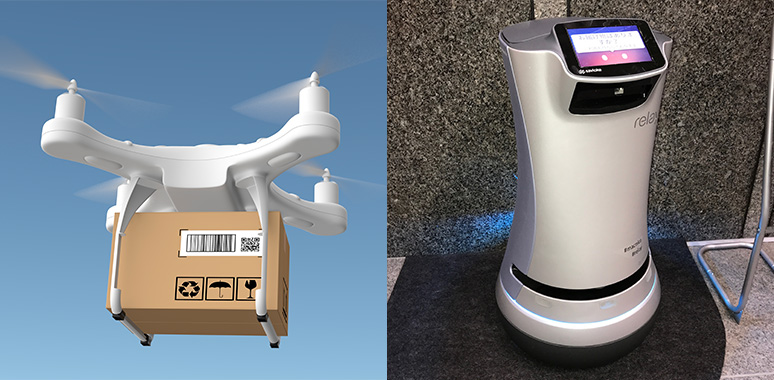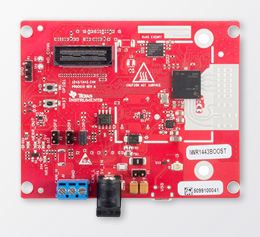"Millimeter wave sensors" are expected to be applied to automobiles and industrial equipment.
Many people know that it is attracting attention, but I think there are many people who do not know what kind of sensor it is.
In this article, we will explain what millimeter waves are in the first place, and the features and applications of millimeter wave sensors. Finally, we will also introduce the recommended millimeter-wave sensor evaluation module from Texas Instruments (hereafter TI). Please take a look to the end.
What is millimeter wave?
Millimeter waves are electromagnetic waves with a frequency band of 30 GHz to 300 GHz. Radio waves with very high frequencies have strong linearity, and even though they are radio waves, they can be treated like lasers. It is also called "millimeter wave" because it has a wavelength of 1 to 10 mm.

A millimeter wave sensor using millimeter waves can measure the distance, speed, and angle of a distant object.

Millimeter-wave sensor principle of operation
We will introduce the actual operation of the millimeter wave sensor, using the case of measuring the distance to an object as an example.
- Generating millimeter-wave signals with a synthesizer
- Transmits radio waves from the TX antenna
- The radio waves reflected by the object are received by the RX antenna
- Combine signals [2] and [3] and convert to IF signal (signal used for calculation)
- Calculates IF signal and converts it to object distance

Features of millimeter wave sensors
Let's take a look at three of the advantages of using millimeter-wave sensors among the many sensor types available.
Feature 1: Excellent environmental resistance
Since millimeter waves are highly linear, they can be detected over long distances even in bad weather conditions such as rain or snow. In addition, millimeter waves are radio waves, not light, so they can be detected regardless of brightness even in environments where the illuminance changes rapidly, such as tunnels.
Feature 2: High precision
Due to the short wavelength, it is possible to achieve high-precision detection, and it is possible to detect movements in units of 0.1 mm at the minimum.
Feature 3: Antenna can be miniaturized
The length of a wireless antenna depends on the wavelength of the radio wave, and since millimeter waves have a very short wavelength, the antenna can be made smaller. As a result, the board area can be reduced.
Application examples of millimeter wave sensors
traffic monitoring
Taking advantage of its environmental resistance and high-precision features, adding a millimeter-wave sensing function to roads and intersections makes it possible to measure vehicle traffic volume.

drone/robot
Taking advantage of its high precision and compact board area, it will be possible to accurately measure the distance to obstacles and perform more advanced operations and navigation by installing millimeter-wave sensing in drones and service robots. .

In addition, it is expected to be applied in various fields and applications such as level sensing for measurement/surveying and building automation for surrounding monitoring.
TI millimeter wave sensor evaluation board
IWR1443BOOST

The IWR series for industrial applications The IWR1443 is a single-chip mmWave sensor with an internal hardware accelerator, and the evaluation board is equipped with an antenna and a connection interface to a microcomputer. If you prepare this board and the online tool "mmWave Demo Visualizer" provided by TI, you can immediately check the operation, so if you are interested, please take a look.
New added value with millimeter wave sensors!
We have introduced the features and application examples of millimeter-wave sensors.
By incorporating millimeter wave sensors into products, it is possible to create unprecedented added value.
If you want to know more about what you can do with industrial millimeter wave sensors, evaluation boards, etc., the article below introduces an example of how gesture sensing can be used using millimeter wave sensors in the video. . This demo is intended for use in medical settings and factories, so please take a look at it together with this article.

Contact Us
In addition to quotations and questions, we also accept consultations on whether the millimeter wave sensor is suitable for the application that the customer is expected to use.
Please feel free to contact us if you are interested.
Click here for recommended articles/materials
Gesture Recognition with Millimeter-Wave Sensors -Utilization in Medical Fields/Factory-
Principles and Features of Ultrasonic Sensors
What is a sensor? Basic knowledge for digitization and IoT
Click here for manufacturer site/other related links
Sensor Overview Product Page
Millimeter wave sensor overview product page
Basics of mmWave sensors
Sophisticated mmWave sensor-based traffic and intersection monitoring
Realization of safety and productivity of drones using mmWave sensors
Using mmWave Radar Sensors in Robotic Applications

